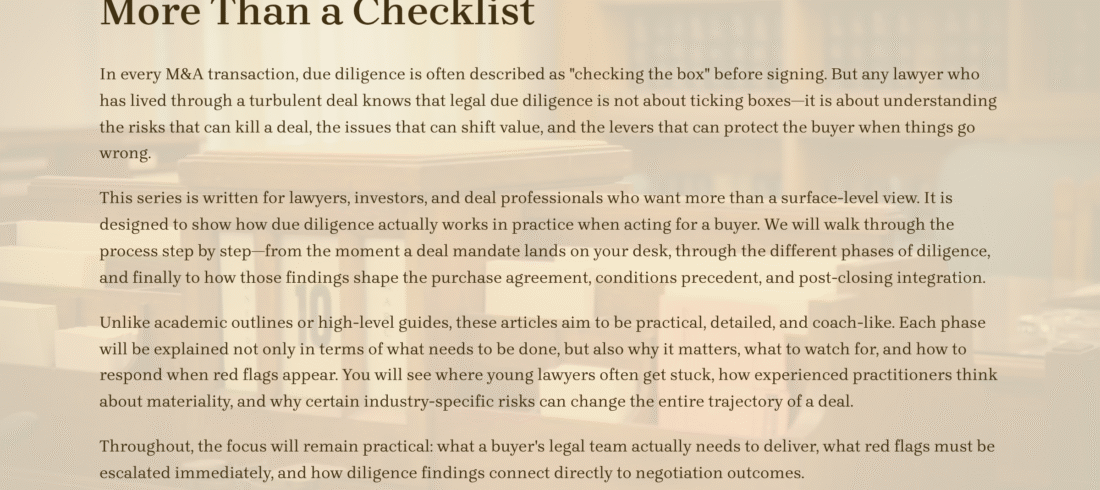To read or download the article, please click the following link
Imagine you’re a business owner in a high-stakes legal dispute. Time is not just money; it’s a crucial factor that can make or break your case. This is where the statute of limitations comes into the spotlight. It’s not just a legal term; it’s a game-changer in civil litigation. In this article, we’ll explore this concept via the lens of a dramatic real-life saga: the clash between two well-known but unnamed corporations (let’s call them the Sword and the Shield). By studying their tale and the legal rules at play, we’ll unlock a deeper appreciation of how the statute of limitations can shape the destiny of legal battles.
1. An Exciting Courtroom Case Study
The stage is set in 2012 with a basic goods purchase contract, but little did the Sword and the Shield know that this would lead them to a legal showdown. Fast forward to March 1, 2017. The air is tense in their Town’s People’s Court, as the Sword files a complaint against the Shield. What’s the catch? The Sword had sat on this case since 2013, well aware of the violation of their rights.
Enter the statute of limitations, the unsung hero (or villain, depending on your perspective). The Shield, in a strategic move, calls for the application of this legal boundary to halt the proceedings. The court’s decision on July 31, 2017, to suspend the case throws a wrench in the story. The Sword, refusing to back down, takes their fight to the higher court, the People’s Court of their Province. However, its challenge hits a wall as the appellate court stands firm, leaving us with the conclusion of the gripping commercial dispute case between the Sword and the Shield.
2. Figuring Out the Statute of Limitations
The plot took an unexpected turn in the epic legal war between the Sword and the Shield when the Shield, despite being the alleged culprit, cleverly utilized the statute of limitations to quash The Sword’s complaint. This twist in the tale underscores the statute’s decisive impact in civil litigation. But what exactly is this legal tool, and how does it shape the battlefield of business law?
Picture the statute of limitations as a ticking clock set by law, counting down to a deadline. Once time runs out, the legal landscape shifts dramatically. This statute marks the timeframe within which you can suit up and bring your legal grievances to court. Miss this window, and your right to battle for justice in court vanishes into thin air.
The countdown starts ticking from the moment you realize (or should have realized) that your legal rights have been violated. And here’s the kicker: not all conflicts are scheduled at the same time. Countdown clocks differ depending on the type of case. This variation adds another layer of complication to the legal strategy.
Here’s a snapshot of different timeframes for various disputes:
– For contract dispute, you have a 3-year timer.
– In commercial clashes, the clock runs for 2 years.
– Labor disputes, you get a year.
Zooming back to our headline case, the Sword first became aware that their rights were being violated in 2013. They did, however, commence their legal salvo in March 2017. The 2-year period for a commercial dispute had already expired under the regulations. As a result, the court’s gavel fell, sealing the Sword’s fate: their right to suit had eroded with the passage of time.
3. Key Takeaways
The legal drama of the Sword and the Shield is a masterclass in the subtleties of the statute of limitations, specifically why the court did not dismiss the action immediately. Let’s deconstruct this with some crucial points that demonstrate the legal system’s deliberate dance.
The Silent Role of Courts in Statute of Limitations: Unlike what one might expect, current civil procedure laws don’t empower courts to proactively reject a lawsuit when the statute of limitations clock has run out. This restraint is echoed in the guidelines from the Supreme People’s Court Judicial Council, which explicitly state that an expired statute of limitations isn’t a valid reason for courts to proactively dismiss a lawsuit.
The Power of Request in Applying the Statute: The real power to invoke the statute of limitations lies not with the court, but with the parties involved. A court can only apply this rule if either of the disputing parties makes the request before the court’s final judgment or decision. This procedural nuance played a critical role in the case between the Sword and the Shield.
Judicial Neutrality and Party Rights: The Supreme People’s Court underscores the importance of maintaining a balance between the parties during a trial. Judges are advised not to guide the parties on exercising their right to request the application of the statute of limitations. This approach aims to preserve the equality and autonomy of the parties involved.
Evolving Legal Landscape: A historical perspective reveals that earlier civil procedure laws (like the Civil Procedure Code 2004) did allow courts to proactively dismiss cases if the statute of limitations had lapsed. However, the 2015 Civil Procedure Code shifted this responsibility to the parties themselves, making it essential for them to actively assert the statute as a defense.
4. Conclusion
In the case of the Sword versus the Shield, our voyage through the legal maze leads to an eye-opening conclusion: a thorough study of legal regulations, along with a sharp comprehension of the case facts, is critical. This astute combination allowed the Shield to effectively traverse the legal seas. Their story is more than just a legal saga; it is a powerful reminder of the power and necessity of procedural understanding in civil litigation.







